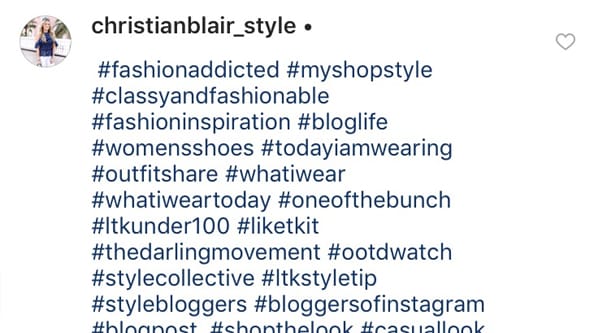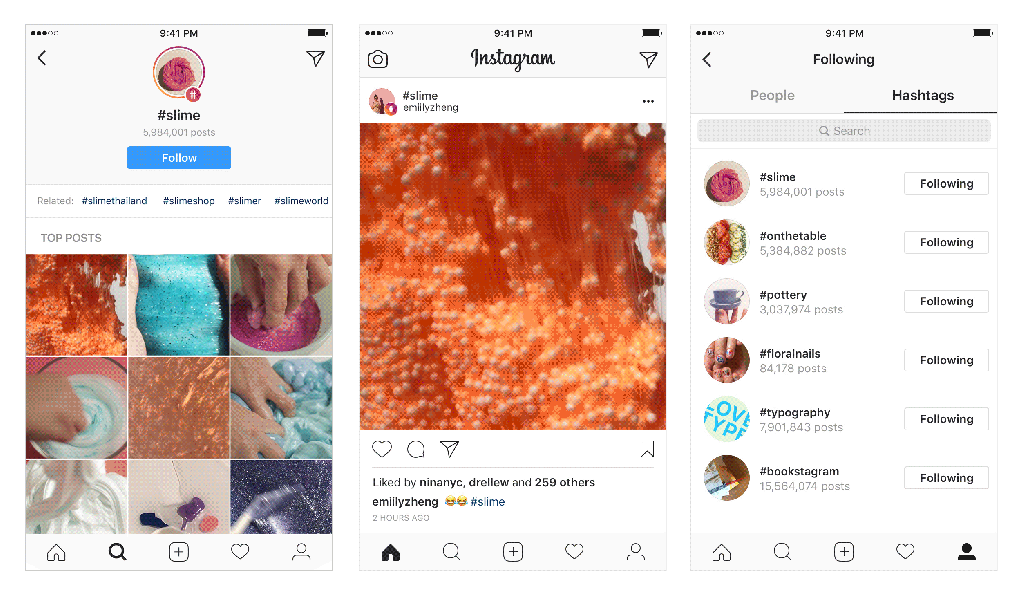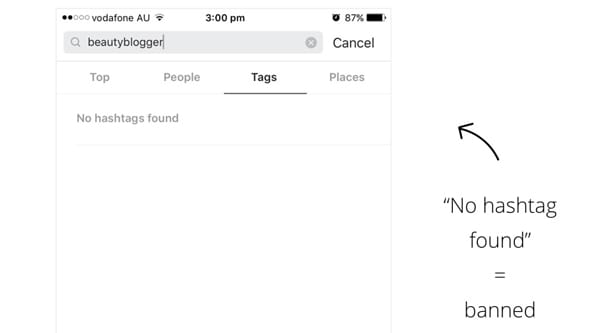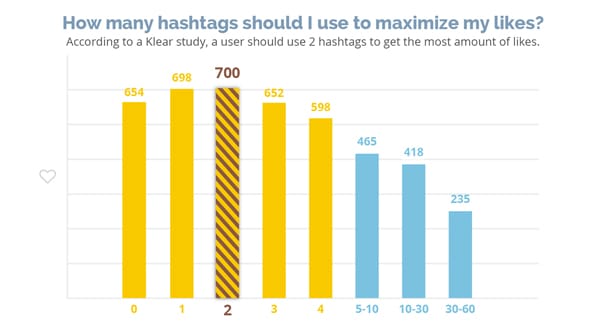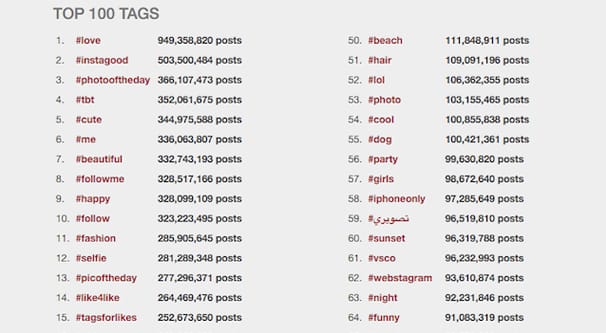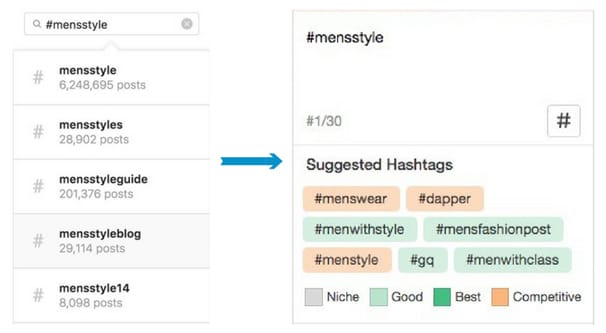There has always been a bit of debate over the utility of hashtags on sites like Twitter and Instagram. On one hand, many marketers consider it essential to layer as many hashtags on a post as possible. After all, each hashtag is a new, unique feed you get your post into. On the other hand, how many of you use a social network and actually browse by hashtag?
I know personally I often ignore hashtags. Hashtags tend to be used more as jokes than as exploration tools. Half the time, I’m clicking hashtags to browse solely so I can look up examples of how behavior works on the social network.
On the other hand, plenty of people have to use these features, or else they wouldn’t continue to exist. Sites like Instagram never shy away from retiring a feature that a) takes up server resources to maintain and b) doesn’t bring them a profit in any way. It’s even worse when c) the data shows users don’t really use the feature. It’s basically a death knell for a feature, be it something like Google Authorship or something like Twitter’s use of Vine.
Hashtags are a core element to Instagram, and you can bet they won’t be going away. In fact, at the end of 2017, Instagram added a new feature to their app and their site that makes it even more important to utilize hashtags; the ability to follow specific tags.
Tag following means that posts made using a specific hashtag will be added to your home feed when you open the app.
It’s important to note here that when you follow a hashtag, you aren’t flooded with every post made in that hashtag. Imagine if you followed something like #contest, which gets thousands of posts per hour. You’d never see a post from your friends again!
Instead, when you follow a hashtag, you are shown only the top posts in the hashtag in your feed. Whenever a new post reaches the top posts box, it goes to your feed as well. Since this generally only means something like 3-10 posts per day, it’s a much more reasonable volume of posts to see. They’re always going to be the top posts for that tag as determined by Instagram’s inscrutable algorithms, of course, but you can then click through to the tag feed and see all the most recent posts as well.
Using hashtags on Instagram is not without risks. There are some ground rules you need to follow, both obvious and unstated. The risks mean the potential punishment is a shadowban.
So, first of all, what is a shadowban? The concept of a shadowban applies to a wide variety of sites and has existed for decades. It’s pretty simple; essentially, your posts become “banned” but your account is not in any way notified. On YouTube, this means you can comment on videos, but no one but you can see the comments, not even the content creator. You’re posting to the void.
On Instagram, the shadowban is a little more lenient. All it means is that a specific shadowbanned post will not appear in the feeds of any hashtags, whether it used those tags or not. Anyone who follows your account can still see the post in their feeds, and can comment on it or engage with it as usual. However, anyone who doesn’t follow you and who might otherwise see the post in the feed of a hashtag won’t be able to see it.
This typically results in a dramatic drop in engagement for the post compared to your average. It does depend, however, on how many people usually engage with your posts from hashtag visibility compared to how many engage from following you. If 99% of your engagement typically comes from people who follow you, you wouldn’t even notice when you were shadowbanned.
What causes a shadowban? Usually it’s the abuse of hashtags. There are two main ways you can abuse hashtags that risk a shadowban.
- Using hashtags that are unrelated to your content.
- Using hashtags known for their abuse.
The first is a very common issue on Instagram. Imagine if you love cats, so you subscribe to the #cats and #catsofinstagram feeds. Then you start seeing a bunch of cat posts, but also a bunch of posts about some dry cleaner, and posts about a chainsaw, and posts about a bunch of Instagram models you don’t care about. You see these posts entirely because they’re using the #cats hashtag, even though their content has nothing to do with cats. You wanted furry feline friends, and you got exploitation and annoying, irrelevant content.
One or two instances of this won’t hurt your account. It’s only when you’re abusing irrelevant hashtags repeatedly that you may find your account shadowbanned. This is mostly an issue when you use a typical Instagram technique of pasting large blocks of hashtags in every post you create. Often some of those tags aren’t going to be very relevant, and it seems spammier to use them than it is beneficial.
Using hashtags known for their abuse is a common issue that you might not even know is an issue. For example, did you know that using #dick or #adult will often get your content shadowbanned? Those tags don’t have feeds at all, for obvious reasons; they’re used for adult content, which is banned on the site.
Those are obvious. Now what about #bombshell, #desk, #gloves, or #skype? They’re more generic terms, but all of them have zero feeds outside of a carefully chosen selection of top posts. They’re all hashtags that have been reported often enough to Instagram for inappropriate content than they’ve been shadowbanned. The list of shadowbanned hashtags is actually pretty huge and growing all the time. Sure, some tags are removed once the abuse settles down, but not all of them.
There are other causes of the shadowban beyond just using hashtags in inappropriate ways, but they don’t apply to a discussion about hashtags. You can always look up discussions about that topic to read more. Some causes include bot-like activity, using unauthorized (and obvious) third party tools, or being reported enough by normal users.
If hashtags can be a minefield of shadowbans, where generic tags can be filtered just because of abuse from other people, why even use hashtags at all? It seems pretty risky; the risk of being reported for spam, the risk of being labeled irrelevant and shadowbanned, the risk of using a tag you didn’t know was dangerous; why not just avoid it altogether?
The fact is, using hashtags is probably your primary means of potential growth outside of paying for promoted posts.
As I mentioned up above, enough people browse Instagram via hashtag to warrant the ability to follow specific hashtags. If you use hashtags — and you’re good enough to reach one of the top post spots — you end up being shown in the feeds for people who have no idea who you are but who like the hashtag you’re using. Obviously, to get any real engagement or a follow out of it, you need that post to be high quality and relevant to the tag’s topic, but that shouldn’t be hard with a carefully chosen tag.
Even if you don’t end up in the top posts, you still gain access to everyone who goes directly to a hashtag feed like this one to browse. Plenty of people like browsing cute cat pictures, so your post will show up — at least for a while, before new content presses it down — where these people can see and engage with it.
You also gain access to any sort of community founded around a tag. Large generic tags like #catsofinstagram aren’t going to have any coherent community. Smaller tags, however, can very much build communities of like-minded individuals. Using a tag like #marketing gets you access to all the marketers sharing their advice back and forth. Those people can be pretty great influencers to reach.
You can also gain specific benefits from specific types of hashtags. Marketing, again, is a good hashtag to reach out to that specific community and communicate that you’re also a marketer worth listening to. Other tags have different purposes, most notably the geographic hashtags. Using geographic hashtags for your location — or the location of the content of the post you’re tagging — means you gain access to the local community for that tag. It can be as broad as #Paris or as narrow as your local small town, but either way, you reach all of the people who live in or are interested in that location.
Trending hashtags have their own benefits. Trending tags are tags that don’t generally get much or any traffic, but due to current events, have become a topic of discussion for a day or a few days at a time. If you can capitalize on a trend, you can reach the people discussing that trend. Some of them will see your post and may decide you have good opinions and follow you.
Of course, regardless of tag or tag purpose, the result is the same. Your post gains exposure to an audience it wouldn’t otherwise reach. Every hashtag you use is another potential audience, even if it is another potential shadowban if you use the wrong one.
So how can you make use of hashtags for the benefit of your business, with as minimal as possible a chance of being shadowbanned or otherwise hurt because of the tags you use? There are a few tips I can give you.
First of all, you need to make sure you use the right kinds of hashtags. Some tags are generic and have far too much competition for you to get more than a few seconds worth of exposure. Some tags are branded and would result in you intruding on the brand and followers of your competition, or even an unrelated brand. Some tags are a Goldilocks-style “just right” where you get a decent amount of exposure without either reaching too small an audience or not reaching a meaningful amount of a large audience.
Second, you need to do your research into your tags before you use them. I always recommend setting up a spreadsheet so you have a list of tags you know are safe, and re-auditing that spreadsheet every couple of months to make sure nothing has changed.
In addition to various metrics about the number of posts and the difficulty of reaching the top posts for a given tag, you should pay attention to two things. Is the tag empty, and is the tag nothing more than a “top posts” section?
If the hashtag you want to use has no content, there are two possibilities. Either it’s a unique tag no one has ever used before, or it’s a tag that has been banned. It’s generally pretty easy to determine if a tag should have content, but you can also just make a test post using that tag and see if it shows up. If nothing shows up, the tag is filtered and isn’t worth using.
If the hashtag has a Top Posts section but has no standard feed content below it, it’s usually a shadowbanned tag. New content can sometimes still show up in the top posts, but you don’t get a temporal feed. These are also tags that aren’t generally worth using.
As long as you’re careful with the tags you pick and do your research before you use them, there’s no reason to avoid hashtags. Sure, it can be a bit of work, but so is everything of value in marketing. The few risks don’t outweigh the potential rewards for Instagram hashtags.
